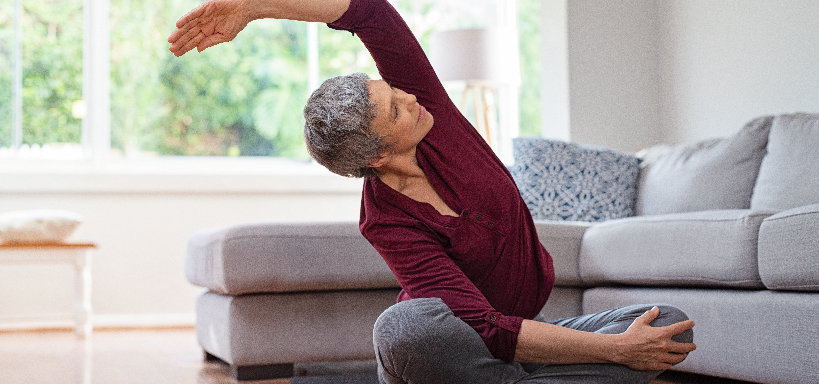This Dr. Axe content is medically reviewed or fact checked to ensure factually accurate information.
With strict editorial sourcing guidelines, we only link to academic research institutions, reputable media sites and, when research is available, medically peer-reviewed studies. Note that the numbers in parentheses (1, 2, etc.) are clickable links to these studies.
The information in our articles is NOT intended to replace a one-on-one relationship with a qualified health care professional and is not intended as medical advice.
This article is based on scientific evidence, written by experts and fact checked by our trained editorial staff. Note that the numbers in parentheses (1, 2, etc.) are clickable links to medically peer-reviewed studies.
Our team includes licensed nutritionists and dietitians, certified health education specialists, as well as certified strength and conditioning specialists, personal trainers and corrective exercise specialists. Our team aims to be not only thorough with its research, but also objective and unbiased.
The information in our articles is NOT intended to replace a one-on-one relationship with a qualified health care professional and is not intended as medical advice.
Is Back Cracking Bad for You? Benefits, Risks & How to Crack Your Back
May 1, 2022

A healthy back is critical for being able to function throughout your day, since your spine is what allows you to stand, walk, bend, lift and generally move. Therefore if you have a tight back — or all too common lower back pain — you may be tempted to “crack it” in order to find relief from discomfort.
Is cracking your back bad for you? It depends.
If a trained practitioner who knows how to correctly crack your back does it, it can be useful for improving mobility and range of motion, but doing it on your own might be risky, especially if you’re cracking areas in your neck or lower back.
That being said, there are some exercises and stretches you can do at home to safely improve your back’s strength and range of motion, some of which might naturally result in you cracking it.
What Happens When You Crack Your Back?
“Back cracking” describes the sound of a “pop” released from the spine when built-up gas escapes from joints. You might also hear other types of sounds, as well as grinding sensations.
Back cracking is also called crepitus of the back.
Why does back cracking feel so good? Because cracking your back involves twisting or maneuvering it so pressure is released from tiny spaces between joints. The same thing happens when you stretch and open up other parts of your body, such as when cracking your knuckles.
It’s believed that the sound produced by back cracking is most likely due to one or more causes:
- Cavitation, or when air pressure within a joint is suddenly altered, causing the collapse of an air cavity in the synovial fluid.
- Ligament or tendon snapping when stretched across a bone.
- Bone grinding, due to deteriorated cartilage surrounding a spinal joint.
Most often people feel the urge to crack their backs when they’re overusing or under-using certain joints. This can cause parts of the spine to become tight or fatigued as pressure builds, limiting mobility and sometimes causing aches or pain.
Is it OK to crack your back? Ultimately, it depends on your general health, how you do it and how often it’s being done.
If your back is mostly in good shape without any serious damage, cracking it now and then might temporarily help you to feel better. However, you want to avoid repetitive back cracking, especially with harsh and sudden twists that can actually worsen pain.
Potential Benefits of Back Cracking
Is back cracking a good thing? If done correctly, it can be.
For example, your back might crack on its own when you exercise or stretch — and these are definitely beneficial habits to keep up with.
The most common reason that people crack their backs, or seek help in doing so from a health care provider, is to improve comfort and increase flexibility and range of motion.
Potential benefits of cracking your back can include:
- Improved joint mobility
- Increased range of motion
- Less tightness, stiffness and pain
- Enhanced flexibility
Risks
While it’s not entirely known what the long-term effects of back cracking may be, it’s thought to be mostly safe.
Still, when it comes to the potential risks of back cracking, it’s not a good idea to crack your own back if you’ve suffered from any serious injuries or are in a lot of pain.
It’s also important that you visit a chiropractor or another trained specialist if you want help cracking your neck or low back, since these areas are particularly sensitive.
Another important consideration: Don’t crack your back too often. Limit it to once per day at most — otherwise you can aggravate vertebrae in your spine.
Definitely don’t crack your back every 20 minutes or so, which is a sign that something more serious needs your attention.
If done too much, back cracking can lead to hyper-mobility of affected joints, which will cause muscles in the back to wind up getting tighter. This can lead to tense muscles, muscle spasms and then back pain.
How to Crack Your Back
How can you crack your back by yourself? You can with help from certain stretches, but I still recommend seeing a chiropractor for adjustments if you regularly experience the need to crack your back or neck.
Here’s how to crack your back without causing further issues:
- Try doing back stretches and exercises that help build stability around the spine while improving flexibility. To do this, perform exercises, including:
- Press-ups
- Superman stretches
- “Cobra” or “updog” yoga poses
- Standing or seated spinal twists
- You can also use a yoga wheel for assistance. This is a cylinder-shaped device you can use at home that helps you stretch more deeply, improve balance and build core strength. Try using it while it doing child’s pose, gentle back bends, shoulder openers and fish pose.
Other tips for taking care of your back and spine include:
- Avoid sitting for prolonged periods hunched over at a desk. Be sure to sit with good posture and an upright spine, such as with help from an ergonomic chair and a raised screen.
- Take breaks from sitting regularly throughout the day. Get up, walk, stretch and generally move around.
- Try using a standing desk if this is an option or sitting on a stability ball to switch things up.
- When you exercise, incorporate a variety of movements into your routine, which can help target different parts of your body that support your spine (like your low back, pelvis and hips).
- Types of exercises that can help most people to strengthen their back include pool aerobics and swimming, using a Bosu ball for balancing exercises, floor exercises like planks, and gentle mind-body practices like yoga, tai chi and Pilates.
When Not to Crack Your Back
Avoid back cracking if you have a serious lack of mobility in parts of your neck or back, you’re in a lot of pain, or you have a history of back injuries.
Be careful not to aggressively twist or manipulate your body. For example, having someone stand on your spine is not a good idea, especially if you’re prone to injuries.
When in doubt, visit either a physical therapist, chiropractor or orthopedic for help with relieving back pain and tightness.
Be especially careful of stretching your back too much if you’re experiencing any of these symptoms:
- Sharp, stinging or throbbing pain, which can indicate a pinched nerve.
- The need to crack your back multiple times per hour to reduce pain, which might be due to a damaged ligament or deteriorated synovial capsule
- Locked joints and complete immobility in parts of the back.
Conclusion
- Is cracking your back harmful? It depends on if you have any injuries, as well as the part of your back that you’re cracking and how often you’re doing it.
- Most people with generally healthy backs can crack their backs by stretching and doing exercises, such as press-ups, twists, supermans and cobra pose.
- However, cracking the neck or low back is best done by a chiropractor or another health care provider.












